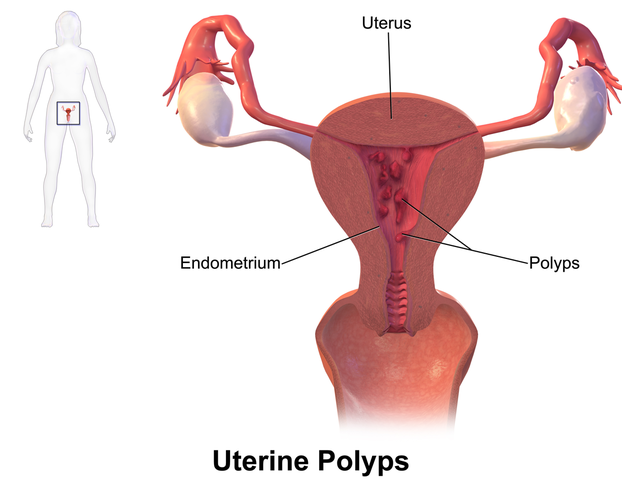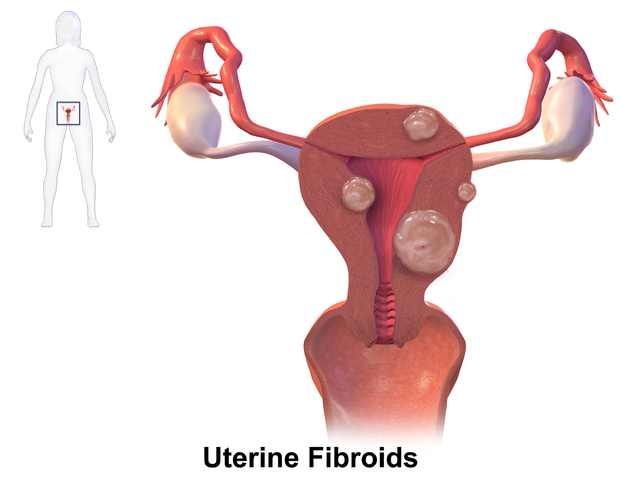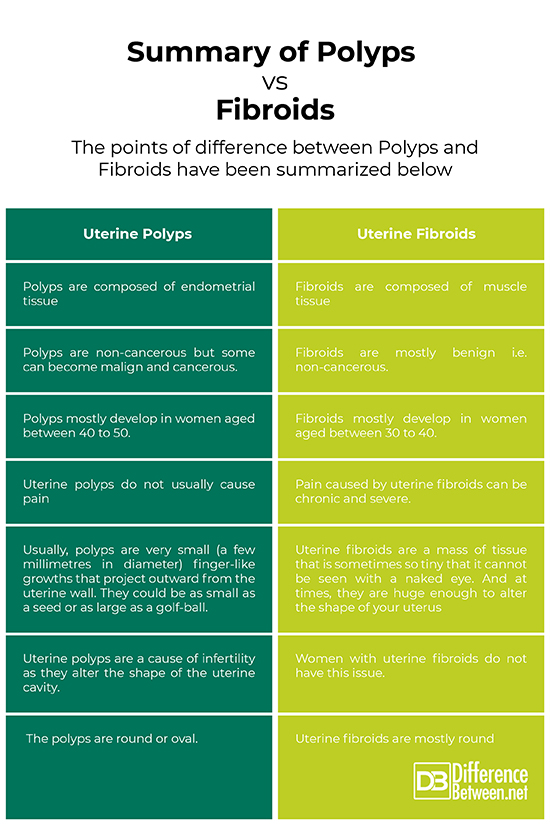Difference Between Polyps and Fibroids
What are Polyps and Fibroids?
Both are reproductive medical conditions and are described as abnormal growths that occur in the uterus. Both polyps and fibroids can cause heavy periods. Though both the conditions sometimes have common symptoms, yet there are a lot of differences between the two. Fibroids are growths of muscle and fibrous tissue in the uterine wall and polyps are overgrowths of the endometrial tissue lining the uterus.
What is Polyps?
Uterine polyps are defined as abnormal soft red tissue outgrowths that develop inside the uterus and can trigger abnormal uterine bleeding or infertility. Polyps are prone to bleeding, and a uterine polyp that grows close to the fallopian tubes even prevents women to become pregnant. One can have one or multiple polyps.
Uterine polyps are as small as a sesame seed (just a few mms in size) or as large as a golf size ball (several centimeters) They are attached to the uterine wall by means of a large base or a tiny stalk. Since polyps are mostly small, they do not cause any symptoms. Uterine polyps usually are seen in the womb (uterus). However, sometimes they can slip down to the cervix (opening of the uterus) and reach the vagina. They are seen in women who are undergoing or have reached menopause. Sometimes, polyps can be seen in younger women too.
What is Fibroids?
Uterine fibroids are abnormal tumours seen in the female reproductive system. They are also termed as uterine myomas, leiomyomas, or fibromas. They are mostly made of smooth muscle cells and fibrous connective tissue growing in the uterus.
Although fibroids are composed of the same smooth muscle fibres as the myometrium, they are quite denser than normal uterine wall. The fibroids usually don’t cause any pain, however, if they are too big in size, they exert too much pressure on the urinary bladder or other organs that can cause other complications. These fibroid tumours are usually common and develop in about seventy percent to eighty percent of all women by the time they reach age 50.
Difference between Polyps and Fibroids
-
Definition
Polyps
Uterine polyps are defined as abnormal overgrowth of cells attached to the lining of the uterus (endometrium).
Fibroids
Uterine fibroids grow from the muscle layers of the womb. Basic uterine fibroids are not noted to be cancerous and are not severe or life threatening. Fibroids usually develop during a woman’s child-bearing years.
-
Causes
Polyps
Uterine polyps are caused due to hormonal issues in women. Uterine polyps are usually oestrogen sensitive and tend to develop when there is more of the hormone oestrogen in the body.
Fibroids
Growth of fibroids has been linked to the female hormones – oestrogen and progesterone. They grow during pregnancy, when hormone levels are very high. Other growth factors include substances that help the body to maintain tissues, like insulin-like growth factor that aid in fibroid growth.
-
Types
Polyps
- Pedunculated polyps
- Sessile polyps
Fibroids
- Intramural fibroids
- Subserosal fibroids
- Submucosal fibroids
- Pedunculated fibroids
-
Symptoms
Polyps
- Bleeding between menstrual periods
- frequent, unpredictable periods
- Bleeding from vagina post menopause
- Excessive bleeding after sexual intercourse or strenuous exercising
Fibroids
- Very heavy or prolonged menstrual bleeding
- Constipation
- Pelvic pain
- Frequent urination
- Inflammation of lower abdomen
- Menstrual cramping
- Mass or lump in the abdomen
- Painful sex
- Recurrent miscarriages
- Rectal pain and difficult bowel movements
-
Fertility
Polyps
Most of the uterine polyps are very small (a few millimetres in diameter) and do not cause any issue with regards to fertility and other reproductive capabilities. However, bigger polyps or multiple uterine polyps lower the chances of implantation of a fertilized egg thereby increasing the risk of recurrent miscarriages and infertility.
Fibroids
Most women having fibroids will not be infertile. Usually, uterine fibroids, do not affect fertility. However, if a fibroid is in the interior of the uterine cavity (submucosal) or is bigger than six cm in diameter, then it can interfere in the reproduction capabilities thereby impeding conception by almost seventy percent.
-
Risk factors
Polyps
- Being obese
- High BP and hypertension
- Drug called tamoxifen (a medication therapy for breast cancer)
- Family history of Lynch syndrome or Cowden syndrome (genetic conditions that run-in families)
Fibroids
- Include a family history of fibroids,
- Early onset of puberty.
- Age older than 40 years
- Gene mutation
- Pregnancy
-
Diagnosis
Polyps
- Transvaginal ultrasound
- Hysteroscopy
- Endometrial biopsy
- Dilation and curettage
Fibroids
- Ultrasound
- Magnetic resonance imaging (MRI)
- Hyster sonography
- Hysterosalpingography
- Blood test (to check for iron-deficiency anemia if heavy bleeding is caused by the tumor).
-
Treatment
Polyps
- An oral progestin or a progestin-releasing intrauterine device
- Endometrial ablation
- Polypectomy
Fibroids
- Hysterectomy
- Myomectomy and Cryosurgery
- Conservative surgical therapy
- Gonadotropin-releasing hormone agonists (GnRH agonists)
- Anti-hormonal agents
- MRI-guided high-intensity focused ultrasound (MRgFUS)
- Uterine artery embolization.
- Anti-inflammatory painkillers
- Medications such as danazol (Danocrine), mifepristone (RU-486, raloxifene (Evista) and GnRH analogs (Lupron and others).
Summary of Polyps Vs. Fibroids
The points of difference between Polyps and Fibroids have been summarized below:
- Difference Between Global Warming and Greenhouse Effect - May 18, 2024
- Difference Between Vaccination and Immunization - March 3, 2024
- Difference Between Selective Mutism and Autism - February 25, 2024
Search DifferenceBetween.net :
Leave a Response
References :
[0]Pérez-Medina, T., Bajo-Arenas, J., Salazar, F., Redondo, T., Sanfrutos, L., Alvarez, P., & Engels, V. (2005). Endometrial polyps and their implication in the pregnancy rates of patients undergoing intrauterine insemination: a prospective, randomized study. Human Reproduction, 20(6), 1632-1635.
[1]Salim, S., Won, H., Nesbitt-Hawes, E., Campbell, N., & Abbott, J. (2011). Diagnosis and management of endometrial polyps: a critical review of the literature. Journal of minimally invasive gynecology, 18(5), 569-581.
[2]Stewart, E. A. (2001). Uterine fibroids. The Lancet, 357(9252), 293-298.
[3]Tanos, V., Berry, K. E., Seikkula, J., Raad, E. A., Stavroulis, A., Sleiman, Z., ... & Gordts, S. (2017). The management of polyps in female reproductive organs. International Journal of Surgery, 43, 7-16.
[4]Vollenhoven, B. J., Lawrence, A. S., & Healy, D. L. (1990). Uterine fibroids: a clinical review. BJOG: An International Journal of Obstetrics & Gynaecology, 97(4), 285-298.
[5]Image credit: https://upload.wikimedia.org/wikipedia/commons/thumb/5/53/Uterine_Fibroids.png/622px-Uterine_Fibroids.png



